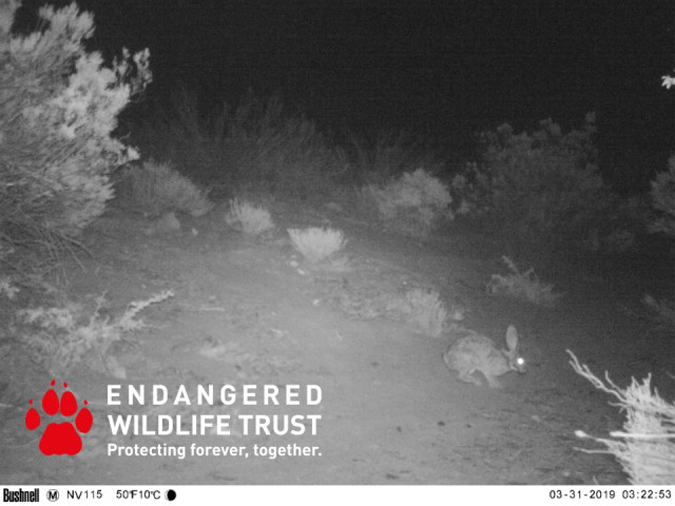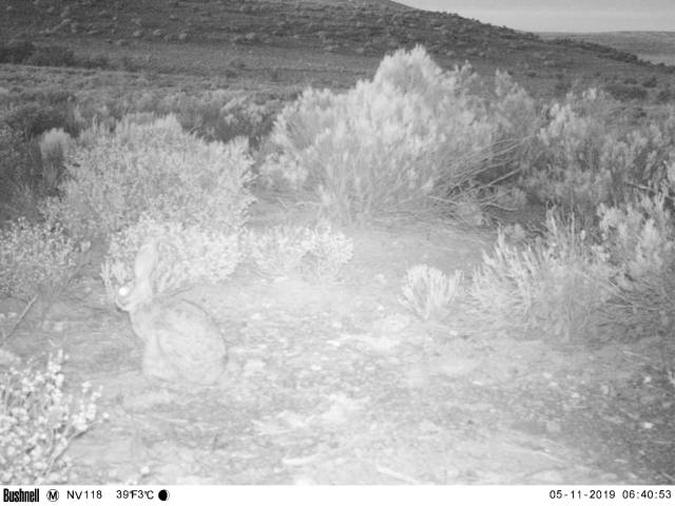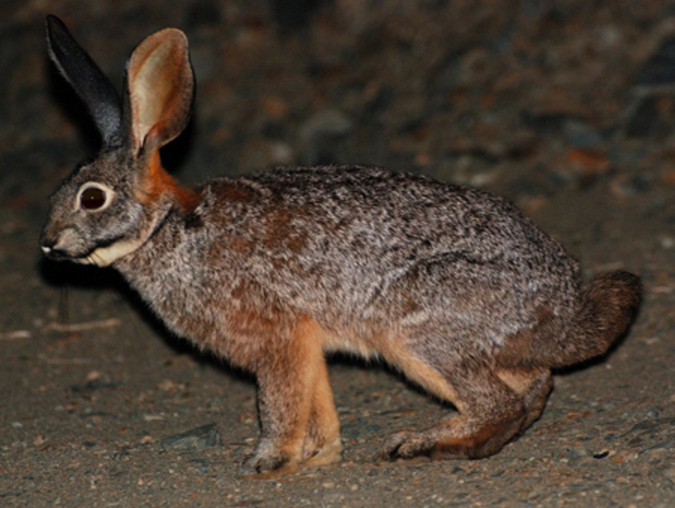
Media release from the Endangered Wildlife Trust
The Endangered Wildlife Trust’s Drylands Conservation Programme was thrilled to confirm the presence of a population of riverine rabbits on the western side of the Baviaanskloof in late May 2019. This population represents a completely new distribution of the species not anticipated by any previous population modelling. According to Bonnie Schumann, EWT Nama Karoo Coordinator, this is a historic find with the closest confirmed sightings of the southern population having been more than 250 km to the west.
The discovery comes after ornithologist and well-known conservation scientist, Alan Lee from Blue Hills Escape Farm in the Western Cape, discovered a dead riverine rabbit on a gravel road in December 2018. Fortunately, he realised that the animal in front of him was not a hare or a rock rabbit but the Critically Endangered riverine rabbit.
EWT team members visited the area and set out 38 camera traps with the aim of capturing live images to confirm the presence of another population. Camera traps are placed in clusters and in such a manner that individuals are not likely to be observed twice by more than one cluster. After 50 days in the field, the cameras were collected by the team and processed.

According to Cobus Theron, EWT Drylands Conservation Programme Manager, “while we expected one or two clusters to capture images, we were astounded that eight of our 12 clusters had confirmed images of riverine rabbits on them!” This again demonstrates that this species is the true hide-and-seek champion of the Karoo.
“This find is unexpected and redefines our understanding of the distribution of the species. It demonstrates that their elusiveness is part of their survival strategy,” continues Cobus.
CapeNature Executive Director: Biodiversity Capabilities, Coral Birss, added, “CapeNature is delighted about the recent discovery of riverine rabbits in the Baviaanskloof area in the southern Cape. The species, which previously managed to go virtually undetected, has proven to effectively solidify its presence, supported by research on genetic connectivity and distribution in the last decade. This latest discovery is remarkable and bodes well for the future survival of this Critically Endangered species, particularly for its protection within the landscapes of the Western Cape surrounding our nature reserves. CapeNature commends the great work and research being done and facilitated by the Endangered Wildlife Trust and looks forward to further collaboration and tracking the progress of this interesting species.”

The EWT has also obtained a genetic sample from the dead rabbit found by Alan Lee. This will be analysed to provide insights into the relationship between the Baviaanskloof riverine rabbits and riverine rabbits from the northern and southern populations.
The find shows the importance of sightings by members of the public and the value of social media in connecting people.
The EWT, along with CapeNature, will now incorporate the findings into their conservation strategy and engage landowners in the Baviaanskloof to ensure that the riverine rabbit receives the attention it deserves.
ABOUT THE ENDANGERED WILDLIFE TRUST
The Endangered Wildlife Trust (EWT) has worked tirelessly for over 45 years to save wildlife and habitats, with our vision being a world in which both humans and wildlife prosper in harmony with nature. From the smallest frog to the majestic rhino; from sweeping grasslands to arid drylands; from our shorelines to winding rivers: the EWT is working with you, to protect our world.
The EWT’s team of field-based specialists is spread across southern and East Africa, where committed conservation action is needed the most. Working with our partners, including businesses and governments, the EWT is at the forefront of conducting applied research, supporting community conservation and livelihoods, training and building capacity, addressing human-wildlife conflict, monitoring threatened species and establishing safe spaces for wildlife range expansion.
A beacon of hope for Africa’s wildlife, landscapes and communities, the EWT is protecting forever, together.
To comment on this story: Login (or sign up) to our app here - it's a troll-free safe place 🙂.![]()






